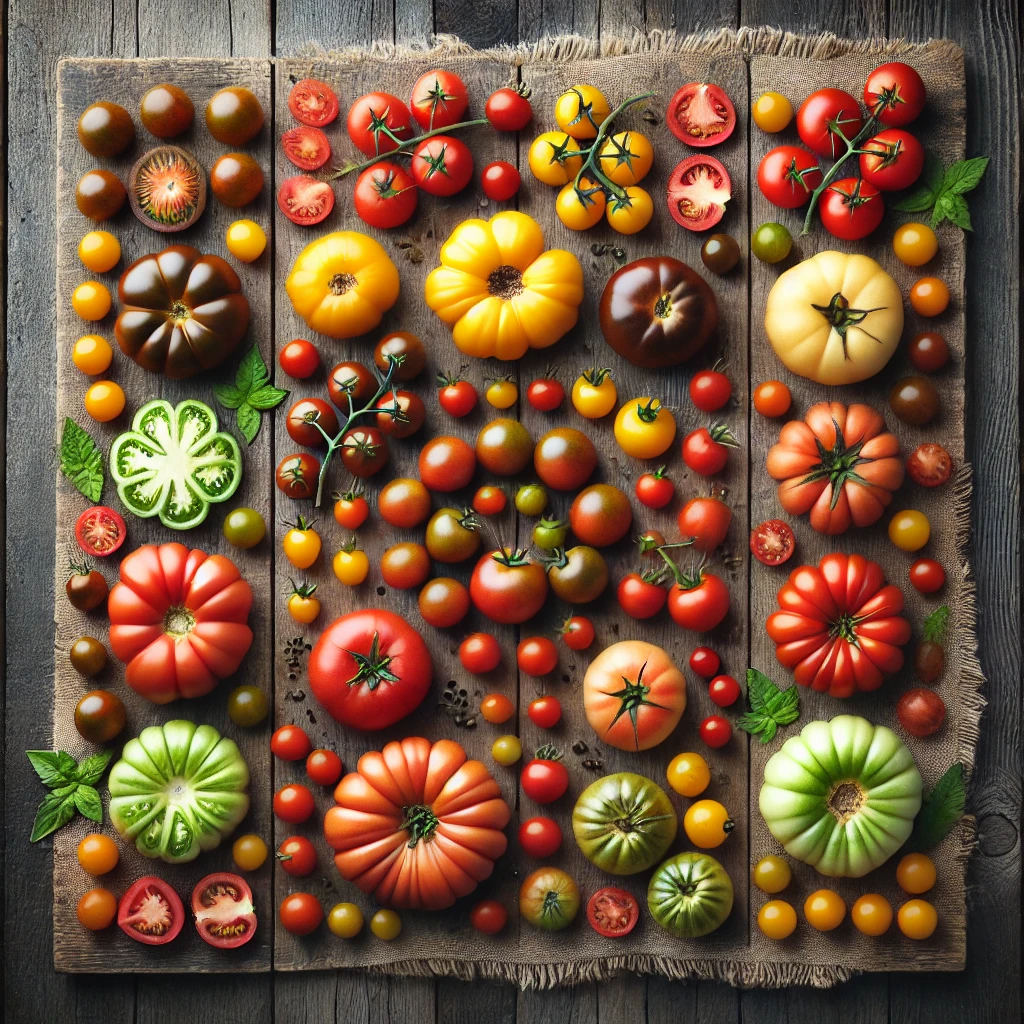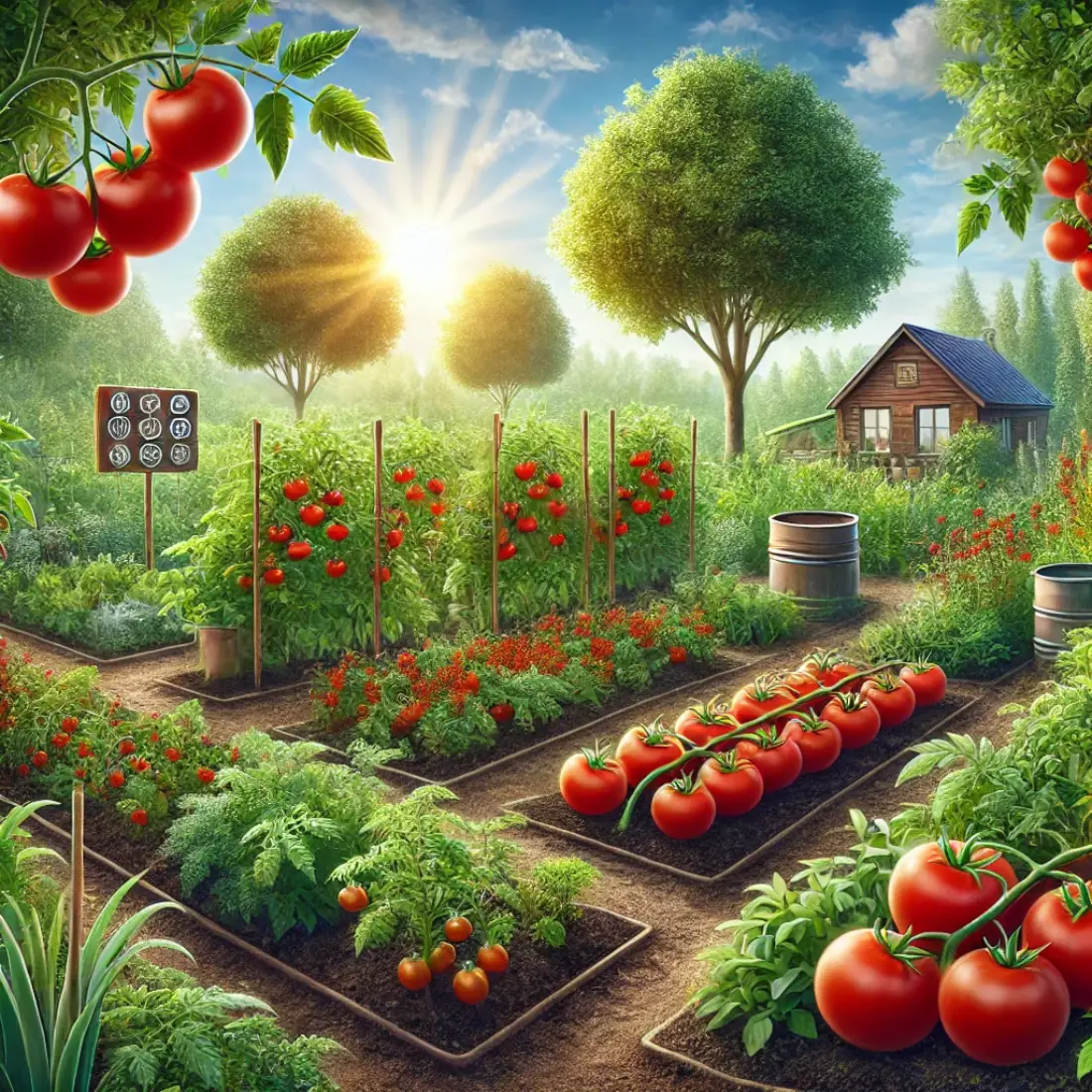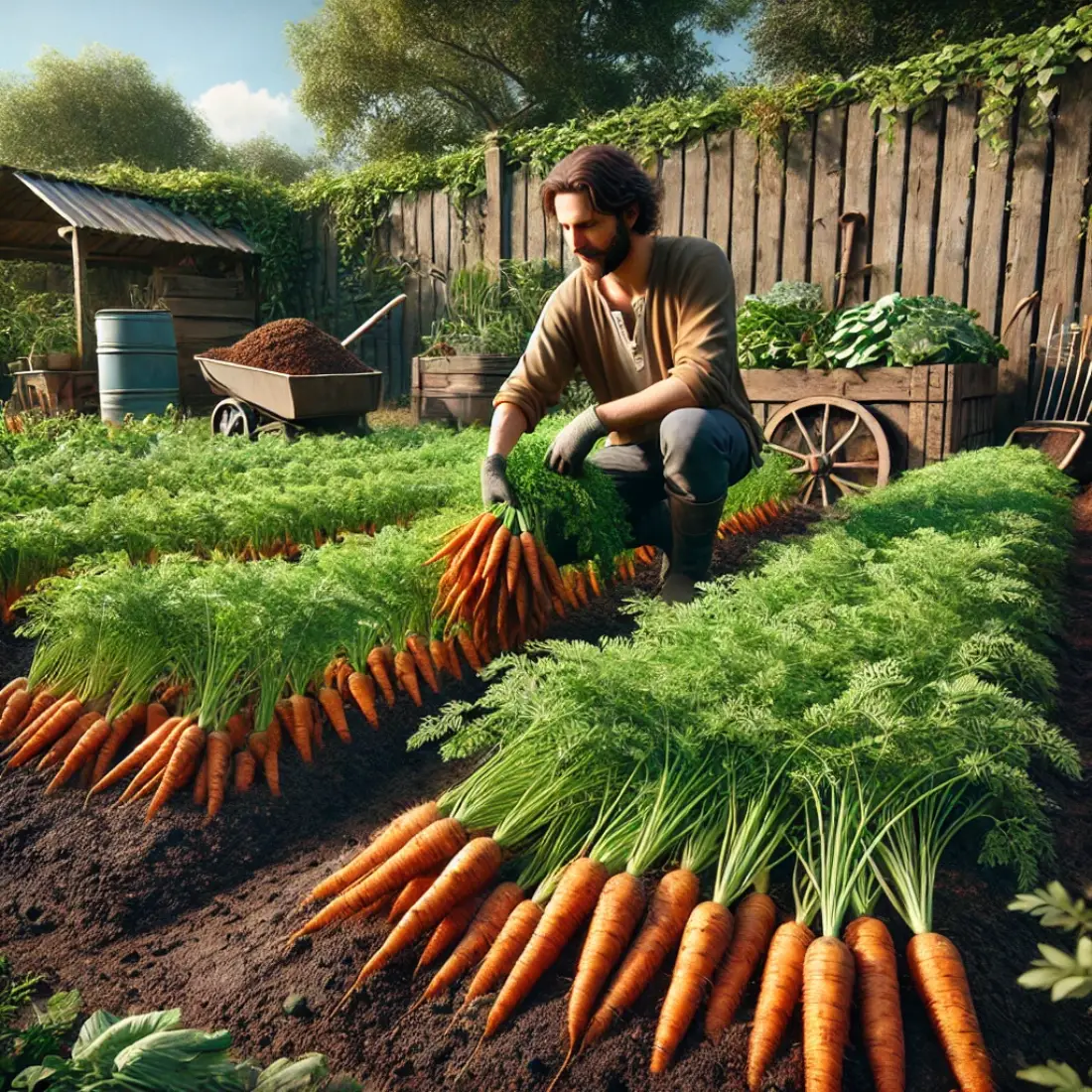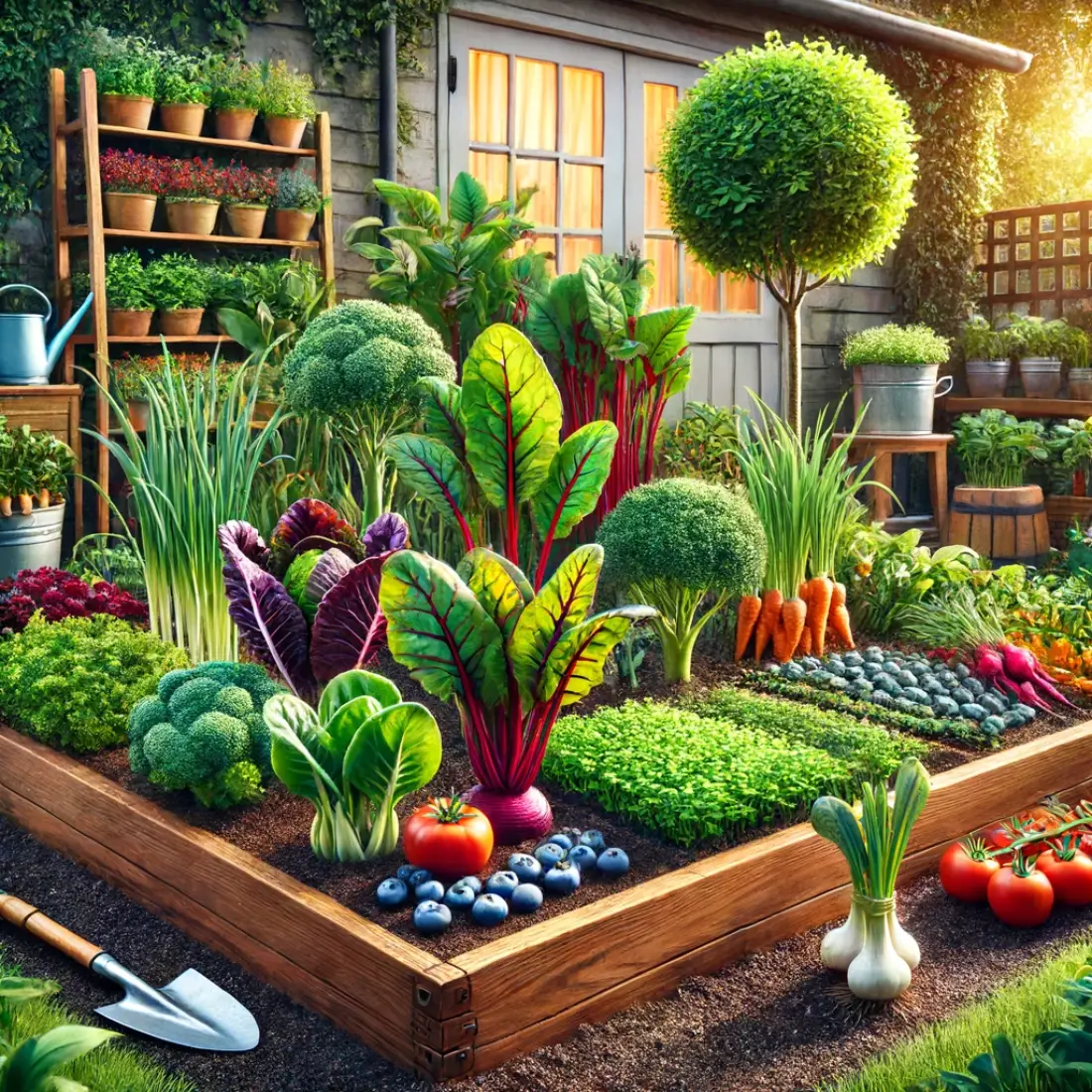Organic tomatoes are not only free from harmful pesticides and chemicals but also packed with nutrients, making them a healthier choice. By choosing to grow tomatoes organically, you contribute to a more sustainable and eco-friendly gardening practice, ensuring that your garden thrives in harmony with nature.
- Understand the benefits of growing organic tomatoes.
- Learn about soil preparation and seed selection.
- Discover the best planting and watering techniques.
- Get tips on pest control and disease prevention.
- Learn how to harvest and store your organic tomatoes.
Choosing the Right Tomato Varieties for Organic Growing
Selecting the right tomato varieties is crucial for a successful organic garden. The choice of variety impacts not only the flavor and texture of your tomatoes but also their resilience against pests and diseases. Here’s a comprehensive guide to help you make the best choices for your organic tomato garden.
Types of Tomatoes: Heirloom vs. Hybrid
Heirloom tomatoes are cherished for their rich flavors and unique appearances. These varieties have been passed down through generations and are open-pollinated, meaning they can produce seeds that grow true to the parent plant. Popular heirloom varieties include Brandywine, Cherokee Purple, and Black Krim. They are ideal for organic growing due to their natural adaptability and diverse genetic makeup, which can offer resistance to certain diseases.
Hybrid tomatoes, on the other hand, are bred for specific traits such as disease resistance, uniformity, and higher yields. While they might lack the complex flavors of heirlooms, hybrids like Early Girl, Better Boy, and Celebrity are reliable choices for beginners due to their robustness and ease of growth.
Best Varieties for Different Climates
Climate plays a significant role in determining the best tomato varieties for your garden. For cooler climates, early-maturing varieties like Stupice and Glacier are excellent choices. They are more likely to produce a good harvest before the first frost. In hotter climates, heat-tolerant varieties such as Heatmaster and Solar Fire thrive under intense sunlight and high temperatures.
Tips for Selecting Seeds
When choosing seeds, consider factors such as growth habit, disease resistance, and intended use. Determinate varieties, like Roma and Patio Princess, grow to a fixed size and are perfect for container gardening. Indeterminate varieties, such as Big Boy and Sungold, continue to grow and produce fruit throughout the season, requiring sturdy support.
Look for seeds labeled as disease-resistant. Varieties resistant to common issues like blight, fusarium wilt, and nematodes will save you a lot of trouble. Organic seeds are preferred for organic gardening as they are grown without synthetic pesticides or fertilizers.

Preparing the Soil for Organic Tomato Plants
A strong foundation is essential for thriving organic tomato plants, and it all starts with preparing the soil. Healthy, nutrient-rich soil promotes robust growth, increases resistance to pests and diseases, and ensures a bountiful harvest. Here’s how to prepare your soil for planting organic tomatoes.
Soil Testing and Amendments
Before planting, conduct a soil test to determine its pH and nutrient levels. Tomatoes prefer slightly acidic soil with a pH between 6.0 and 6.8. Soil tests can be done using home testing kits or by sending samples to a local agricultural extension office.
Based on the results, you may need to amend your soil. If the pH is too low (acidic), add lime to raise it. If it’s too high (alkaline), sulfur can help lower it. To boost nutrient levels, incorporate organic compost, well-rotted manure, or leaf mold into the soil. These amendments improve soil structure, enhance fertility, and increase microbial activity.
Importance of Organic Compost
Organic compost is a cornerstone of healthy soil. It enriches the soil with essential nutrients such as nitrogen, phosphorus, and potassium. Compost also improves soil texture, promoting better root growth and water retention. Aim to mix a generous amount of compost into the top 6-12 inches of soil where tomato roots will spread.
Techniques for Improving Soil Fertility
- Cover Crops: Planting cover crops like clover or rye during the off-season adds organic matter to the soil and prevents erosion. When turned into the soil, these green manures enhance fertility.
- Mulching: Apply a layer of organic mulch, such as straw or grass clippings, around your tomato plants. Mulch helps retain moisture, suppress weeds, and gradually adds nutrients as it decomposes.
- Crop Rotation: Avoid planting tomatoes in the same spot year after year. Rotate them with non-nightshade crops to prevent soil-borne diseases and nutrient depletion.
Improving Soil Drainage
Tomatoes require well-draining soil to prevent root rot and other water-related issues. If your soil is heavy clay, improve its drainage by incorporating organic matter such as compost, sand, or perlite. Raised beds are another excellent solution for enhancing drainage and soil quality.
Starting Tomato Seeds Indoors
Starting tomato seeds indoors gives you a head start on the growing season and allows for more control over the early stages of growth. This process ensures that your tomato plants are strong and healthy by the time they are ready to be transplanted outdoors.
When to Start Seeds Indoors
Begin by determining the right time to start your seeds. Typically, tomato seeds should be started indoors 6-8 weeks before the last expected frost date in your area. This timing gives the seedlings ample time to develop before being moved to the garden.
Necessary Materials and Setup
You will need:
- Seed trays or small pots
- Sterile seed-starting mix
- Tomato seeds (organic if possible)
- Clear plastic cover or plastic wrap
- Grow lights or a sunny windowsill
- Spray bottle for watering
Step-by-Step Seed Starting Process
- Fill Containers: Fill your seed trays or pots with the seed-starting mix. This mix is lightweight and designed to promote healthy root growth.
- Plant Seeds: Place 2-3 seeds in each cell or pot, about 1/4 inch deep. Cover lightly with soil and gently press down.
- Moisten Soil: Use a spray bottle to moisten the soil. Keep the soil consistently damp but not waterlogged.
- Cover and Warm: Cover the trays with a clear plastic cover or plastic wrap to create a mini-greenhouse effect, which helps retain moisture and warmth. Place the trays in a warm location, ideally between 70-75°F (21-24°C).
- Provide Light: Once the seeds germinate (usually within 5-10 days), remove the cover and place the seedlings under grow lights or in a sunny windowsill. Tomato seedlings need 14-16 hours of light daily to prevent them from becoming leggy.
Caring for Seedlings
Thin out the weakest seedlings, leaving the strongest one in each cell or pot. Keep the soil moist and maintain a consistent temperature. As the seedlings grow, consider gently brushing your hand over them daily to stimulate stronger stem growth.
Transplanting Tomato Seedlings to the Garden
Transplanting tomato seedlings from indoors to the garden is a crucial step that requires careful planning and execution. Proper transplanting ensures that your tomato plants adapt well to their new environment, promoting healthy growth and abundant fruit production.
Timing for Transplanting
Tomato seedlings should be transplanted after the last expected frost date in your area when nighttime temperatures consistently stay above 50°F (10°C). Generally, seedlings are ready to transplant when they are 6-10 inches tall and have at least two sets of true leaves.
Preparing the Garden Bed
- Choose the Right Location: Select a sunny spot in your garden that receives at least 6-8 hours of direct sunlight daily. Tomatoes thrive in warm, well-drained soil.
- Prepare the Soil: Ensure the soil is rich and well-drained by incorporating plenty of organic compost. If needed, amend the soil with organic fertilizers to boost nutrient levels.
- Harden Off Seedlings: Gradually acclimate your seedlings to outdoor conditions over a week. Start by placing them outside for a few hours a day, gradually increasing their exposure to sunlight and wind.
Techniques for Successful Transplanting
- Digging Holes: Dig holes that are deep enough to bury the seedlings up to their first set of true leaves. This encourages the development of a strong root system.
- Planting Seedlings: Carefully remove each seedling from its pot, handling it by the leaves to avoid damaging the stem. Place the seedling in the hole, fill it with soil, and gently firm the soil around the base.
- Watering: Water the seedlings thoroughly after planting to help settle the soil and eliminate air pockets. Maintain consistent moisture as the plants establish themselves.
Post-Transplant Care
Mulch around the base of the plants to retain moisture and suppress weeds. Consider using organic mulches like straw or grass clippings. Provide support for the growing plants by installing stakes, cages, or trellises soon after transplanting to prevent damage to the roots.
FAQs about Starting Your Tomato Garden
When should I start tomato seeds indoors?
Start tomato seeds indoors 6-8 weeks before the last expected frost date in your area. This timing allows the seedlings to grow strong before being transplanted outdoors.
What type of soil is best for growing organic tomatoes?
Tomatoes thrive in well-drained, fertile soil with a slightly acidic pH between 6.0 and 6.8. Adding organic compost enhances soil fertility and structure.
How do I choose the best tomato varieties for my garden?
Choose tomato varieties based on your climate, space, and taste preferences. Heirloom varieties offer unique flavors, while hybrid varieties are often more disease-resistant and productive.
How do I prepare the soil for planting tomato seedlings?
Test your soil’s pH and nutrient levels, amend it with organic compost, and ensure good drainage. Adding organic fertilizers can boost nutrient levels if needed.
What is the best way to start tomato seeds indoors?
Use seed trays or small pots filled with a sterile seed-starting mix. Plant seeds 1/4 inch deep, keep the soil moist, and place the trays in a warm location with sufficient light.
How do I harden off tomato seedlings before transplanting them outdoors?
Gradually acclimate seedlings to outdoor conditions over a week. Start by placing them outside for a few hours each day, increasing their exposure to sunlight and wind gradually.
When is the best time to transplant tomato seedlings into the garden?
Transplant tomato seedlings after the last frost date when nighttime temperatures stay above 50°F (10°C). Seedlings should be 6-10 inches tall with at least two sets of true leaves.
How should I space my tomato plants in the garden?
Space determinate (bushy) tomato plants about 2 feet apart and indeterminate (vining) varieties about 3 feet apart. This spacing allows for good air circulation and growth.
What are some organic methods for fertilizing tomato plants?
Use organic compost, well-rotted manure, or organic fertilizers like fish emulsion, seaweed extract, or bone meal. These provide essential nutrients without harmful chemicals.
How can I prevent common pests and diseases in my organic tomato garden?
Practice crop rotation, use disease-resistant varieties, maintain good garden hygiene, and employ organic pest control methods like neem oil, insecticidal soap, and beneficial insects.










